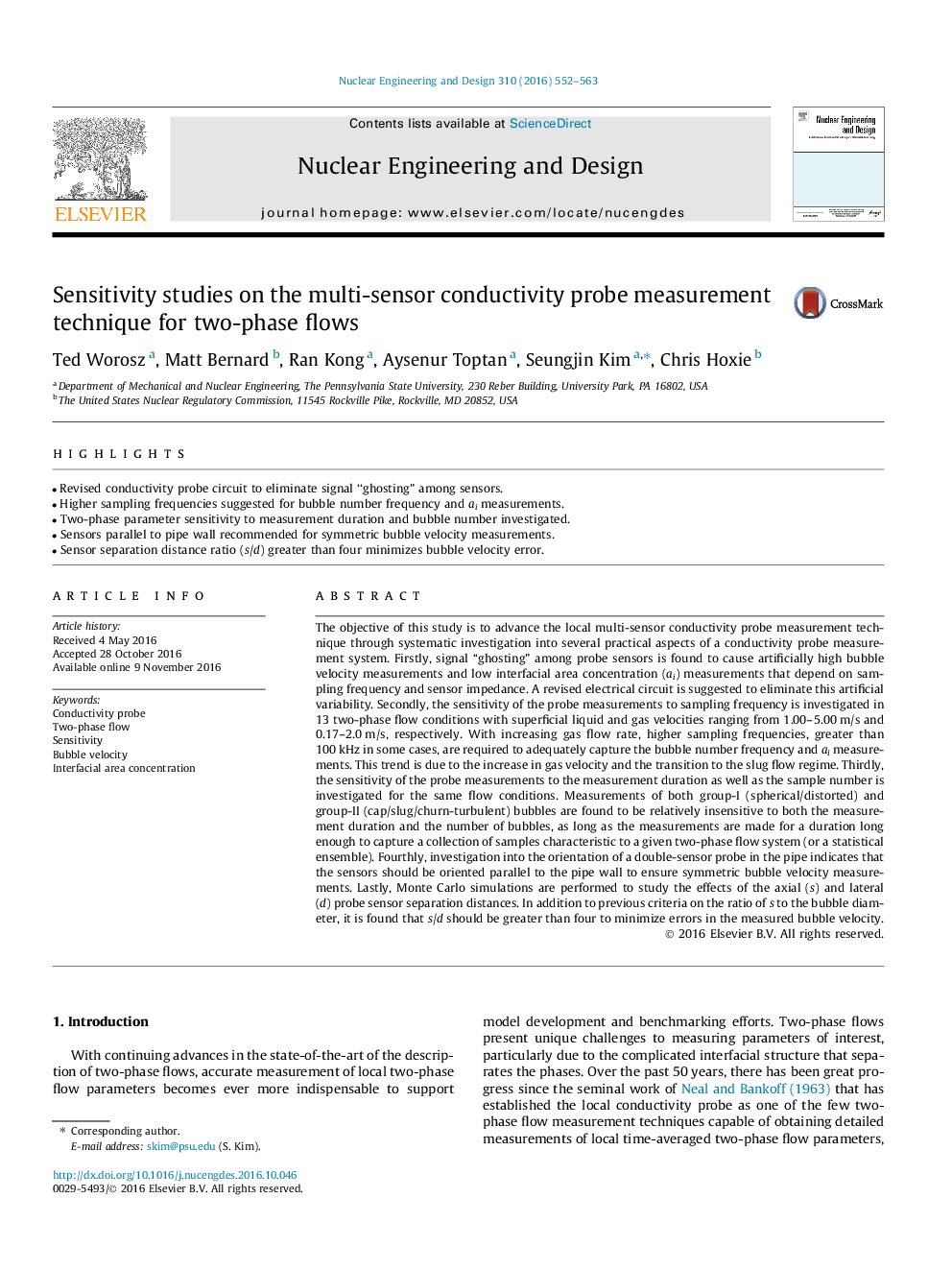| کد مقاله | کد نشریه | سال انتشار | مقاله انگلیسی | نسخه تمام متن |
|---|---|---|---|---|
| 4925656 | 1431411 | 2016 | 12 صفحه PDF | دانلود رایگان |
عنوان انگلیسی مقاله ISI
Sensitivity studies on the multi-sensor conductivity probe measurement technique for two-phase flows
ترجمه فارسی عنوان
مطالعات حساسیت در روش اندازه گیری پروب هدایت چند سنسور برای جریانهای دو فازی
دانلود مقاله + سفارش ترجمه
دانلود مقاله ISI انگلیسی
رایگان برای ایرانیان
کلمات کلیدی
پروب هدایت الکتریکی، جریان دو مرحله ای، حساسیت، سرعت حباب، تمرکز منطقه اینترفیس
موضوعات مرتبط
مهندسی و علوم پایه
مهندسی انرژی
مهندسی انرژی و فناوری های برق
چکیده انگلیسی
The objective of this study is to advance the local multi-sensor conductivity probe measurement technique through systematic investigation into several practical aspects of a conductivity probe measurement system. Firstly, signal “ghosting” among probe sensors is found to cause artificially high bubble velocity measurements and low interfacial area concentration (ai) measurements that depend on sampling frequency and sensor impedance. A revised electrical circuit is suggested to eliminate this artificial variability. Secondly, the sensitivity of the probe measurements to sampling frequency is investigated in 13 two-phase flow conditions with superficial liquid and gas velocities ranging from 1.00-5.00Â m/s and 0.17-2.0Â m/s, respectively. With increasing gas flow rate, higher sampling frequencies, greater than 100Â kHz in some cases, are required to adequately capture the bubble number frequency and ai measurements. This trend is due to the increase in gas velocity and the transition to the slug flow regime. Thirdly, the sensitivity of the probe measurements to the measurement duration as well as the sample number is investigated for the same flow conditions. Measurements of both group-I (spherical/distorted) and group-II (cap/slug/churn-turbulent) bubbles are found to be relatively insensitive to both the measurement duration and the number of bubbles, as long as the measurements are made for a duration long enough to capture a collection of samples characteristic to a given two-phase flow system (or a statistical ensemble). Fourthly, investigation into the orientation of a double-sensor probe in the pipe indicates that the sensors should be oriented parallel to the pipe wall to ensure symmetric bubble velocity measurements. Lastly, Monte Carlo simulations are performed to study the effects of the axial (s) and lateral (d) probe sensor separation distances. In addition to previous criteria on the ratio of s to the bubble diameter, it is found that s/d should be greater than four to minimize errors in the measured bubble velocity.
ناشر
Database: Elsevier - ScienceDirect (ساینس دایرکت)
Journal: Nuclear Engineering and Design - Volume 310, 15 December 2016, Pages 552-563
Journal: Nuclear Engineering and Design - Volume 310, 15 December 2016, Pages 552-563
نویسندگان
Ted Worosz, Matt Bernard, Ran Kong, Aysenur Toptan, Seungjin Kim, Chris Hoxie,
